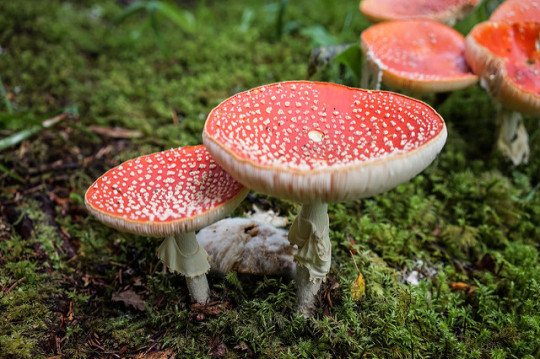Photo

Blackberry, Lime and Thyme Cake http://ift.tt/2fJyqZx
15K notes
·
View notes
Text
A tradition handed down from a long line of swamp witches is to place a ribbon or bracelet around a doorknob and only remove it to wear it when you wish to shut out certain things or people at that time. You say what you wish to close off or shut out then tie the ribbon on your wrist or put on the bracelet. If it breaks or falls off your wrist then that means someone or something is going out of their way to delve into your life.
714 notes
·
View notes
Text
What does it mean to be pagan? (Paganism 101 Ch. 1)

That’s right, y’all! With Baby Witch Bootcamp officially wrapped, it’s time to jump into our next long term series! I put out a poll on Patreon, and my patrons voted for Paganism 101 as our next series. While not all witches are pagan and not all pagans are witches, there is a lot of overlap between the two groups. Both witchcraft and paganism offer practitioners a sense of freedom, a deeper connection to the world around them, and a greater awareness of their personal power.
I identify both as a witch and as a pagan, and I get a lot of questions about paganism. In this series, we’ll go through the basics: what it means to be pagan, the difference between a neopagan and a reconstructionist, and the role of magic in different pagan traditions. We’ll also talk about some of the most popular modern pagan traditions and how to find the right tradition for you.
Let’s start off by answering the question, “What does pagan actually mean?”
Defining “Pagan”
It’s important to remember that “pagan” is an umbrella term that encompasses a wide range of different faiths. Someone who practices Wicca, for example, will have very different beliefs from someone who practices Hellenismos. These different faiths are linked by a shared history, rather than by shared beliefs or practices.
The word “pagan” comes from the Latin “paganus,” which literally means “area outside of a city” or, to phrase it slightly differently, “countryside.” This adjective was used to describe people and things that were rustic or rural and, over time, came to also have the connotation of being uneducated. Originally, the word had no religious association, and was even used to refer to non-combatants by the Roman military.
From this definition, we can gain some insight into what makes a religion or practice pagan. Pagans feel a kinship with the wild or rural places of the world, and are comfortable waking “off the beaten path.”
But how did “paganus” come to refer to a type of religion, anyway?
To understand the religious meaning of “paganus,” it’s necessary to understand a little bit about the religion of Ancient Rome. Rome (the city) was built inside a pomerium, a sacred boundary that formed a spiritual border around the city and its people. Paganus folks were those who lived outside the pomerium and, as such, may not have been strict adherents of the state religion — they certainly wouldn’t have been able to travel into the city for every major festival. They may have gotten a bit more creative with their worship of the gods. However, as previously stated, the word paganus did not have an explicitly religious meaning in ancient times.
The use of paganus as a religious label began after the legalization of Christianity by the Roman Emperor Constantine in 313 C.E. Christianity would not be adopted as the official state religion until 380 C.E., but Constantine’s conversion and decriminalization of Christian worship paved the way for Rome’s transformation into a Christian state. It was around this time, as Christianity was quickly growing in urban areas, that early Roman Christians began using the word “paganus” to refer to those who still practiced polytheism. Rather than referring to those outside the city’s boundary or to untrained civilians, the label now referred to those outside the Church, those who were not “soldiers of Christ.”
As Christianity spread in popularity throughout the Mediterranean, Europe, and Northern Africa, the pagan label was applied to all non-Christians in those areas. The word “pagan” became a derogatory label, implying an inferior and backwards religion.
So, really, the thing that makes a religion pagan is a historical conflict with Christianity. Pagan religions are those that were suppressed or completely destroyed after Christianity became the dominant faith in the region.
This is why Norse Paganism and Kemetic (Egyptian) polytheism, which are very different, are both considered “pagan” while Shinto, a Japanese religion that shares a lot of common features with many pagan faiths, is not. Because Christianity never achieved total dominance in Japan, Shinto was never pushed aside to make room for Jesus.
In the 20th century, people who felt drawn to these old religions started to reclaim the pagan label. Like many other reclaimed slurs, “pagan” became a positive label for a community united by their shared history.

What do all pagans have in common?
This is a tough question to answer because, as stated above, paganism is a historical definition, not one shaped by belief or practice. However, there are some things most pagans have in common. Here are a few of them, although these concepts may take different forms in different traditions.
Paganism…
… is (usually) polytheistic. Most pagans do not subscribe to monotheism, the belief in a single, all-powerful divine being. Some pagans are polytheists, meaning they believe in multiple divine beings with varying levels of power. Hellenic pagans, Norse pagans, and Celtic pagans are typically polytheists. Still others are monists, meaning they believe in a single divine source that manifests itself as multiple gods. Wiccans and other neopagans are typically monists. Many pagans fall somewhere in-between strict polytheism and strict monism. We’ll talk more about polytheism in a future post, but for now just know that the idea of a single, supreme creator is not compatible with most forms of paganism.
… is based in reciprocity. This is a concept that may seem odd to those who grew up around Abrahamic religions: the idea of engaging the gods in a mutually beneficial partnership, rather than one-sided worship. When we connect with the gods, we receive spiritual, emotional, and physical blessings. The gods also benefit, as they are strengthened by our prayers and offerings. (I like to think they also enjoy the company. It has to be lonely, having your body of worshipers supplanted by an anarchist carpenter from Palestine.) The concept of reciprocity is why most pagans make physical offerings to their gods.
Reciprocity also extends to our relationships with other people. Most pagan religions have a code of ethics that includes values like hospitality, kindness, and/or fairness with others. Depending on the pagan, reciprocity may even extend to the dead! Many (but not all) pagans practice ancestor worship, the act of honoring and venerating the beloved dead.
Reciprocity may even extend to the world at large. Some (but not all) pagans are animists, which means they believe that every animal, plant, and stone contains its own spirit. Animist pagans strive to live in harmony with the spirits of the world around them, and may make offerings to these spirits as a sign of friendship.
… embraces the Divine Feminine. Paganism acknowledges and venerates both masculine and feminine expressions of divinity. Polytheist pagans worship both gods and goddesses, while monist pagans see the divine Source as encompassing all genders. In either case, the end result is the same: pagans acknowledge that, sometimes, God is a woman. (Cue the Ariana Grande song.)
Paganism also acknowledges gender expressions outside the masculine/feminine binary. Many pagan deities, like Loki (in Norse paganism), Atum (in Kemetic paganism), and Aphroditus (a masculine aspect of the Greek Aphordite) exist somewhere in the grey area between man and woman.
… is compatible with a mystic mindset. Remember how I said there’s a lot of overlap between witchcraft and paganism? Part of the reason for that is because paganism is highly compatible with magic and other mystical practices. Most pagans believe that humans have, or can attain, some level of divine power. It makes sense that this power would manifest as magic, or as other spiritual abilities. Many of the ancient cultures modern paganism draws inspiration from practiced magic in some form, so it follows that modern pagans would as well.
… draws inspiration from the ancient stories. As we discussed, “pagan” originally referred to the religious groups that were pushed out by Christian hegemony. As a result, every modern pagan is a little bit of a historian. Because paganism was pushed underground, it takes a little digging to find myths, rituals, and prayers that can be used or adapted for modern practice.
Many pagans worship historic deities that you’ve probably read about at some point. Visit any pagan pride event, and you’ll probably find worshipers of Zeus, Venus, Thor, and Isis, just to name a few. Studying and interpreting ancient mythology and archaeological evidence is a big part of modern paganism.
… is a religion with homework. If you’ve read this far, you may be beginning to realize that being pagan is a lot of work. It’s fun, spiritually fulfilling, and very rewarding work, but work all the same. Because very few modern pagans have access to temples, priests and priestesses, or an in-person community that shares their beliefs, they end up having to teach themselves, do their own research, and guide their own practice.
This is incredibly empowering, as it means you are your own religious authority. It does, however, mean that you will occasionally have to open a book or slog through a dense academic article about the most recent archaeological find related to your favorite deity. Thankfully, there’s a growing number of accessible, beginner-friendly books, blogs, podcasts, and YouTube channels to help you in your research.
… embodies a deep respect for the natural world. While not all pagans are animists, most pagans do feel some sort of reverence for the forces of nature. Many pagan deities are associated with natural forces or use the natural world to communicate with their followers. Because of this, not only do pagans respect and love nature, but they’re constantly watching it for signs and messages. (Are you really friends with a pagan if they haven’t called you crying because they found a crow feather on the ground or saw a woodpecker in their backyard?)
Some pagan groups, especially neopagan religions like Wicca, have been classified as Earth-centered religions. Personally, I dislike this term. While it is true that many pagans feel a deep spiritual connection to the Earth and may even venerate local nature spirits, to say that these religions are “Earth-centered” feels like an oversimplification. Wiccans, for example, don’t actually worship nature — they worship the God and Goddess, who they see reflected in the natural world.
… is driven by individual spiritual practice. As mentioned above, very few pagans have access to an in-person community. Because of this, modern paganism largely consists of individual practices. Even pagans who do belong to a community still typically worship on their own sometimes. These personal practices may involve prayer, offerings to the gods, meditation, divination, astral travel, performing religious rituals, or countless other practices. Many pagans have personal altars in their homes, where they worship alone or with their family.
… is a celebration of daily life. One thing I love about paganism is how it makes every aspect of my life feel sacred. Many religions emphasize the spiritual aspects of life while deemphasizing, or even demonizing, the physical or mundane aspects. This can lead to practitioners feeling like they are spiritual beings trapped in a physical body, or like their physical needs and desires are something to escape.
Paganism allows practitioners to fully enjoy being physical and spiritual beings. Pagans reach for the heights of spiritual awareness, while also enjoying earthly delights — recognizing that neither is inherently more worthy than the other and that both are needed for a balanced life.
… is only one of many paths to Truth. Most pagan groups do not claim to be the only valid religious path, and in fact several openly acknowledge the validity of other religions. This is why you rarely see pagans trying to convert other people to paganism — it’s openly acknowledged that paganism isn’t for everyone, and that those who are truly meant to practice the old ways will find them.
~~~
Hopefully, this post has given us a good working definition of “paganism.” From here, we’ll explore some of these individual concepts in more depth and discuss specific religions within the pagan umbrella. Until then, blessed be.
Resources:
Wicca for Beginners by Thea Sabin
Wicca: A Guide for the Solitary Practitioner by Scott Cunningham
A Witches’ Bible by Janet and Stewart Farrar
The Way of Fire and Ice by Ryan Smith
Where the Hawthorn Grows by Morgan Daimler
Temple of the Cosmos by Jeremy Naydler
A Practical Guide to Irish Spirituality by Lora O’Brien
264 notes
·
View notes
Text
Pros and Cons of Outdoor Ritual

Image source
Okay, so…why do that ritual outside?
Pros:
The natural spirits of the land you are on have a vested interest in maintaining the landscape. You are very small. They are very large. If, for some reason something does go wrong, and whack things do happen, and clean up is bigger than you thought it would be, most excess energy left after you clean up can be cleansed out by moonlight overnight. You can always ask the Earth to absorb and purify the rest.
No smoke detectors. Want incense? Get as far away from other people as possible and flick your bic.
If you work with celestial bodies, such as stars, plants, or the Moon and Sun as I do, they have better access to you just as you do them. It’s not as hard to reach out to them when you can see them right there.
If you live in a place where you feel the need to hide your craft or otherwise don’t feel comfortable showing it off, leaving the house can give you more peace of mind.
Spiritual cleaning up afterwards is a breeze. Fan yourself down with incense. Hop over running water on the way home. Blast ABBA. Take the long way home through a few intersections and wrong turns. Presto. Nothing will follow you home and you now smell like Nag Champa.
Communing with houseplants is cool, but nothing beats trying to ask a tree literally any question. They are so old.
Blasting music during ritual is more fun in open air.
Depending on where you are outside, the outside world offers introspection your bedroom cannot. If you are Wiccan or Pagan, or follow a more historically driven path, you simply have to be out in nature at one point. The bonfires have to happen somewhere. The higher powers that you may want to contact could be summoned into your bedroom, but it would not be nearly as strong as simply finding them in the corners of the world where they naturally reside. It simply is not the same. The two things cannot be compared.
Cons:
You have to carry all that stuff out, and bring it all back in. You better be good at packing a bag, and you better not forget anything.
Bugs!
Dirt!
No bathroom! I hope you don’t have to pee on your way in or out…
Occasionally, you will not be far enough out of sight, whether in your backyard or in a park or in the woods, and people will see you, and you will have to make a calculated decision about how weird you are willing to look in a park. Waving my crochet hook around as I call circle with it, mumbling all the way is not as hard to explain as me, at 11pm, wandering around campus in a cloak and holding a foot long selenite wand. Sure, you could say “I’m practicing for a play,” or “I’m a ren-faire actor” if spotted but depending on how far in the woods you are, people might not believe you. (If you do a good job, this will be really rare.)
You have to bring your own food if you need to eat out there. I hope you like meal prepping and tupperware.
Here is some amateur advice I will recommend when doing ritual outside:
Bug spray. No matter the season. Doesn’t matter if you’re anti-chemical. There be ticks in them thar woods. DEET is cheaper than Lyme treatments. Use DEET.
Use reuseable tupperware or other storage containers for publicly shared spaces. Leave nothing behind. Do not litter. People are not here to pick up your cliff bar wrapper. People are not here to pick up your incense cone butts. Litter is litter.
Get very, very far away from other people– especially from children– when lighting incense. Incense can stir allergies very very quickly.
If you know approximately what you use in ritual every time, you can make a portable altar for yourself. That makes it way easier to pack up ritual implements and tools you’ll need for your day out.
Lighter, not matches. Matches are harder to keep lit in wind conditions.
Check the weather before you go. Layers.
Offer food or other low-impact offerings to a gate before you enter a space that you hope to use for ritual. Be polite. This is their space, and you’re borrowing it. You want to get home without getting lost, don’t you?
So if you’ve never considered outside ritual, give it a thought! Sure, this really isn’t the season for it, but I want everyone to know their options. I cannot tell you what to do. You are the witch. You’ll make your own informed decision. When the cold of Winter is finally over, and the light returns, you might find planting bulbs and singing in my back yard on Ostara.
Blessings!
292 notes
·
View notes
Text


I’m so drawn to Elder Futhark Runes. I love my little rune stones and I’ve been working on honing my intuition when tossing and reading them. I love how free-flowing they are but how personalized the readings I get are. I wanted to make a pretty page for them, but then I realized that I just needed something useable. I’ve pulled the meanings from several resources and I think this is a very good reference for myself 🙌🏼💕
331 notes
·
View notes
Photo




Peder Mønsted - Sunset over a forest lake, 1895 (details)
60K notes
·
View notes
Text
We are fairly close to the winter solstice now and the darkness is really setting in. Darkness can be so beautiful, but the long-lasting darkness of winter can feel oppressive, like being stuck inside a spaceship.
I think when we dread the darkness, we fear infinity. Long nights create a sense of living without time. The night feels as though it can stretch on forever.
What did our ancestors do? They told stories. And they slept. They probably slept a lot. A season of night ought to be a season of sleep. Winter is the dreaming season.
542 notes
·
View notes
Photo

Lemon Raspberry Cake
-
Your source of sweet inspirations! || GET AWESOME DESSERT MERCH! || GET THE BEST BAKING SUPPLIES! || 100% CERAMIC COOKWARE!
88 notes
·
View notes
Text
Magical Rituals without Tools
I’ve been too strict with myself throughout my witching career. I convinced myself that rituals are most effective with a ton of preparation and picking just the right tools. While magic certainly works this way, it can also work if I perform them spontaneously. This year, I’m focusing more on spontaneous, simple rituals performed with little or no tools, that are still effective in their own right.
To clarify, when I say “no tools”, I’m talking about a situation where you wish to perform a ritual but have none of your witchy supplies on you (divination sets, magical herbs, candles, instructions etc.). In most cases, you may be outside or traveling. Say you went to the beach, or a park, or cemetery, and wish to honor the spirits or cast a spell. How would you do so?
Recently I’ve been brainstorming these methods using outdoor rituals I’ve performed in the past as reference. As a disclaimer, these correspondences (for lack of a better term) are highly personal to me. Since these rituals are usually spontaneous, you’ll have permission to alter the significance of these as you see fit.
Gestures
Hands on the ground can ground you, stabilize your energy, and focus on your energy mingling with the energy of the earth.
Raising your hands towards the sky helps you harness and absorb energy from the sky, and celestial powers. You can also just face your palms towards the sky if you want to remain inconspicuous.
Pointing is a powerful gestures used to direct energy. If you want to charge an object, for instance, you can point at it or tap it.
Your palms facing away from your body can act as a protective gesture, cutting you off from outside forces. You can also sweep your hands across areas to isolate them, brushing unwanted energies away from the space.
Your palm pressed to the ground or an object directs energy into it. Not only can this ground you, but it releases a lot of energy, activating a spell. You can also raise your own energy by pressing your hand to your heart, or even hugging yourself.
Grabbing helps you pull in and trap energies.
In the same vein, opening your hand releases energy.
Extending your hand, as if to give a handshake, is a welcoming gesture that invites forces to come to you. This signals to spirits that you welcome them, and that you request to work with them.
Sitting still allows you to listen and meditate. If you want to hear a response or a sign, it is best to remain still.
Dancing releases energy and raises the vibration of the energies around you. You can collapse to the ground when the energy has reached its peak, and needs to be released.
Breathing techniques are a staple in magic, but since I’ve already made a post about them, I’ll link that post here.
Music / Sounds
Certain words and sayings hold great power when stated and chanted. I won’t list any because there are too many to count, but memorizing a hymn or repeating whatever persists in your mind can have great effects.
Similarly, singing raises the power of these words. It can be used to conjure, harness and build energy, sanctify and invite.
Clapping, or otherwise banging objects together, creates a lot of energy. This can cleanse ritual spaces, raise power, and release power.
Whistling and humming helps you resonate with the energies around you. It can also help you attain a meditative state, and attract spirits.
Silence allows you to listen and inspect.
Handling the Ground (Such as Dirt or Sand)
Drawing or marking a circle gives you a designated ritual area. Although this isn’t necessary, I find it useful to mark an area that I can raise energies in. You can draw it in the dirt or sand, or mark the area with stones, flowers, leaves or sticks.
Drawing symbols in the dirt can drastically change the energy of a ritual area. It can be part of a spell or an offering. Hearts, sigils, words and phrases–your options are flexible here.
Burying objects releases it from your control and your sight. This can be done for offerings, banishings, and letting go spells.
Sticking objects into the dirt or sand allows the object to absorb the earth’s energy, without being entirely released from your control.
Concerning Objects Available to You
If you’re performing a ritual outside, chances are you have some natural items available to handle, such as stones, grass, leaves and perhaps water. What you do with these objects depends on the purpose of your ritual. Rituals without tools tend to be spontaneous, meaning that you’ll have to determine the use of each object on the spot.
If you’re conducting a ritual with no tools, that most likely means that you won’t have a grimoire or correspondence list with you. You’ll have to use what you know about that object, and what you feel is best by speaking to it. In fact, I almost didn’t include this section because unprepared rituals are so uniquely you that I cannot instruct them.
I’ll list some things I’ve done in the past as examples. But remember that your intuition will guide you the most. When it’s your turn, you won’t have this post to guide your actions.
Stones stabilize energies and provide a focal point. I’ve place stones in the middle of my ritual circle as a centerpiece. I’ve also held them to ground myself and meditate. You can also make noise and music by banging said stones.
Leaves have multiple uses, but I often use them as energy directors. They can outline a ritual circle, be used to make symbols, and point to objects. They can also be infused with energy, and then crumpled, buried or ripped.
Sticks direct energy, similar to wands. They can draw symbols, mark circles or outlines, or funnel energy into a specific point.
Water cleanses, blesses, and invigorates with life. Use on yourself or your makeshift ‘tools’.
Wind cleanses, releases, and sweeps away energies, whereas celestial bodies such as the sun and moon charge things with energy.
I won’t include anymore, because these kinds of rituals rely on your good judgement. But hopefully this gave you some ideas on what you can do if you’re ever out somewhere without your tools.
6K notes
·
View notes
Photo

Long-horned Orb-weaver Spider (Macracantha arcuata, Araneidae)
124 notes
·
View notes
Text
Top Ward Mistakes I
These are some common reasons why wards, even powerful ones, fail at times. I have noticed these over the years, through my mistakes and others.
Not enough layers: Wards are made of pure energy, and usually aren’t sentient- meaning they aren’t smart and usually don’t adjust to different attackers. Without the ability to adjust, attackers can get by with ease. Having multiple layers of wards helps prevent this. While layers will vary of course based on your needs, I always recommend three basic layers for a ward, going outwards to the inside: 1) non-detection, 2) offensive ward, 3) defensive ward. The reason for these particular layers being: an attacker can’t attack if it can’t find you. If they do find you, they are then dissuaded by a ward that attacks them. They will have to go through the ward that hurts them to even get to the ward that defends you, thus weakening them and making it harder to get through that final line of defense at the same time.
Too rigid: What shatters more easily when hit- a plastic case, or a rubber ball? The plastic case- why? Because it is super rigid and unable to bend; thus, just one concentrated hit could break through it with ease. This applies to wards as well- you don’t want your wards to be unable to bend- else they shatter under a concentrated hit. Being flexible doesn’t make a ward weaker- you can still have a super tough and thick ward that bends!
Not selective or specific enough: “Keep out malicious entities.” Okay, well what do you mean by malicious? Being as specific as possible is best when it comes to protections. Instead of just saying “malicious” how about- “those that would bring me nightmares”, “those that would harm me”. This also ties into the next point-
…From whose point of view?: Okay, you did it, you made your ward. “Keep out anything with malicious intent.” But the key is…who judges the malicious intent? A nasty entity could easily go, “this is good for me!” and bypass the ward. Additionally, an abusive entity who believes, from their point of view, that what they are doing is “helping” you, and thus not malicious, could easily bypass an unspecific ward. It is best to say something along the lines of, “Things I deem as a malicious intention.” That way, it is based on YOUR judgement alone, what YOU deem as bad, and thus it cannot be interpreted any other way by trickster entities.
A circular wall, or a sphere?: You made your ward- it’s selective, not super rigid, and you made sure the terms were from your point of view. And yet- it’s still easily bypassed! Bad Entities appear in your room, seemingly untouched by the wards. What could’ve happened? Well- this ability called “teleportation” exists. If your innermost ward is a circular wall- not filled in- then an entity could easily bypass your wards just by teleporting directly to you or directly into your space! To protect against this, you want your innermost ward to be like a sphere- filled in on the inside with protective energies as well. Thus, the constraints applying to the outer layers of your wards (no malicious intent from my point of view) are applied to your actual space as well- thus nullifying the teleporting ability, or dealing damage to any entities that manage to teleport inside anyways.
9K notes
·
View notes
Photo










WHY EATING SEASONALLY IS IMPORTANT
•save money - food is at it’s highest supply
•food is better - it is grown closer to home so less likely to rot
•support local, sustainable farmers
•more environmentally friendly
99K notes
·
View notes
Photo

If you see this on your dashboard, reblog this, NO MATTER WHAT and all your dreams and wishes will come true.
108K notes
·
View notes









